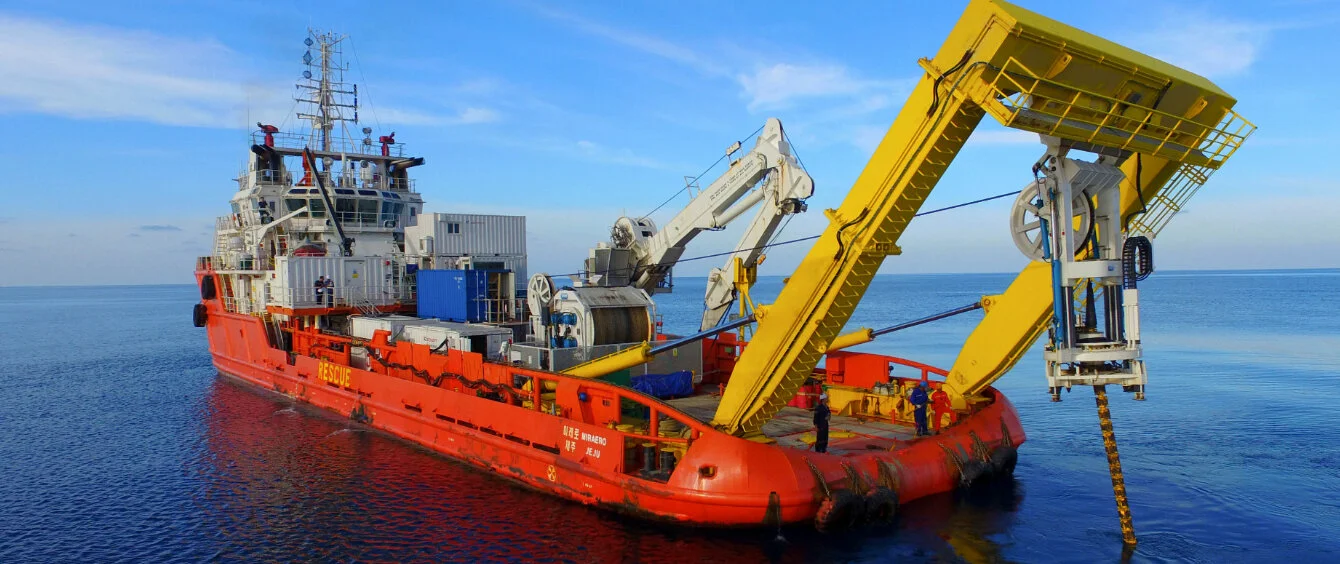A new generation of interconnectors between the UK and Europe will be integrated with offshore energy islands to boost sustainable, power generation and smooth imbalances between markets. This will allow the efficient use of generation assets and grid infrastructure, improving security of energy supply and price competition to the benefit of consumers.
Interconnectors are not new, but from small, uni-directional point-to-point systems, they have evolved to offer much larger capacities, bi-directional power flows and ‘multi-purpose’ functions via connection to offshore generation assets. These power cables, hundreds of kilometres in length, could one day provide the backbone for an offshore North Sea super grid, allowing Europe to exploit the full potential of its vast wind resources free from a reliance on imported fossil fuels.
From a small start …
The first UK interconnector, completed in 1961, was a modest 160 MW cable to France, which was decommissioned in 1984. But, in 1986, the much larger UK-France interconnector (Interconnexion France-Angleterre — IFA) was completed with capacity of 2 GW. Connections to the Netherlands (1 GW) and Ireland (500 MW) followed in 2011 and 2012 respectively.
After a seven-year lull, the Nemo interconnector to Belgium (1 GW) was completed in 2019, followed by IFA 2 to France (1 GW) and the North Sea Link (1.4 GW) to Norway in 2021. The latter, at 724 kilometres, is the longest subsea interconnector in the world, linking Norway’s abundant hydro power resources with the UK’s growing portfolio of offshore wind farms.
In all, the UK now has total interconnector capacity of 6.9 GW, connecting six electricity markets, including Britain, although 1 GW of the IFA interconnector is offline until October 2023, pending repairs caused by a fire in September last year.
In 2020, a year of pandemic-induced low electricity demandv, the UK imported 22.4 TWh of electricity and exported 4.5 TWh. Net electricity imports made up 5.4% of total electricity supply in 2020, compared with 6.1% in 2019.
New cable construction
Interconnectivity is set to jump further in coming years, owing to the 1.4 GW Viking cable to Denmark, which is scheduled for completion in 2023, the 500 MW Greenlink to Ireland in 2024 and two new 1.4 GW connections to France, Gridlink and Fablink, in 2025.
Plans beyond then are at earlier stages, but a further 4.8 GW are on the drawing board to increase the UK’s connections with Belgium and the Netherlands and, for the first time, create a direct link with Germany. In total, the UK could have 13 interconnectors by 2030, with total capacity of 16 GW, not including even more ambitious projects such as the 3,800 km Morocco-UK power project.
UK-Germany power link
NeuConnect, the proposed new link with Germany, would connect two of Europe’s largest electricity markets. The two have different generation profiles and both are changing rapidly.
German and UK electricity generation in 2020
sorted by energy source; in percent; source: BP Statistical Review of World Energy, 2021Similarities are limited hydro power and wind accounting for a similar share of generation — about 24% in 2020. Both have ambitious wind and solar targets, so the share of variable generation looks certain to grow, although the UK is more dependent on offshore wind to meet its low carbon generation targets, while Germany is embarking on a more even expansion of on- and offshore wind and solar power.
Key differences are that nuclear power accounted for 11.8% of electricity in Germany and 16.5% in the UK. Germany is phasing out its nuclear plants, so this share will fall, while the UK will continue to use nuclear, although the technology’s contribution may also decline as more old reactors are retired than new ones built.
In addition, while the UK has all but completed its phase out of coal-fired generation, coal use in Germany will be eased out of the energy mix over a longer time scale. The UK is more dependent on natural gas for electricity generation by comparison, but security of supply issues and environmental targets suggest gas use will fall as each country progresses towards their common goal of net zero carbon emissions by 2050.
As both increase the share of variable renewable energy generation, the benefits of being able to smooth supply and demand imbalances via a direct power link should rise.
North Sea energy island
The UK and Belgium governments in February signed a memorandum of understanding for the construction of a second interconnector between the two countries. However, in contrast to the existing 1 GW Nemo cable, the new interconnector will be ‘multi-purpose’.
This means it will be directly connected to generation assets, in this case a North Sea energy island comprised of large offshore wind farms.
When the wind is blowing, electricity will flow to both markets. Electricity from other generation sources can still be traded between the two countries, reducing potential curtailment of generation from renewable energy assets at times of excess generation, and aiding supply security when variable generation is low and demand high.
Coupling the offshore wind farm’s connection to shore with the interconnector means there will be little or no redundancy, which would certainly exist if the two were built separately. This offers significant cost savings in overall construction and operation.
From there, it is not hard to envisage a network of multi-purpose interconnectors across the North Sea, connecting on and offshore generation assets and transmitting sustainable power to multiple European markets – in effect a North Sea super grid.
